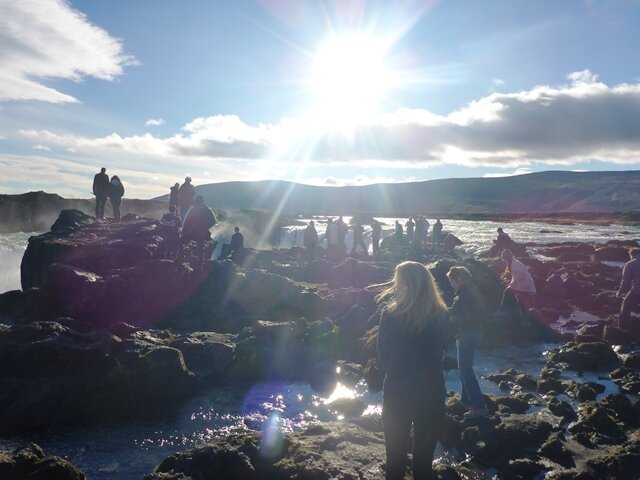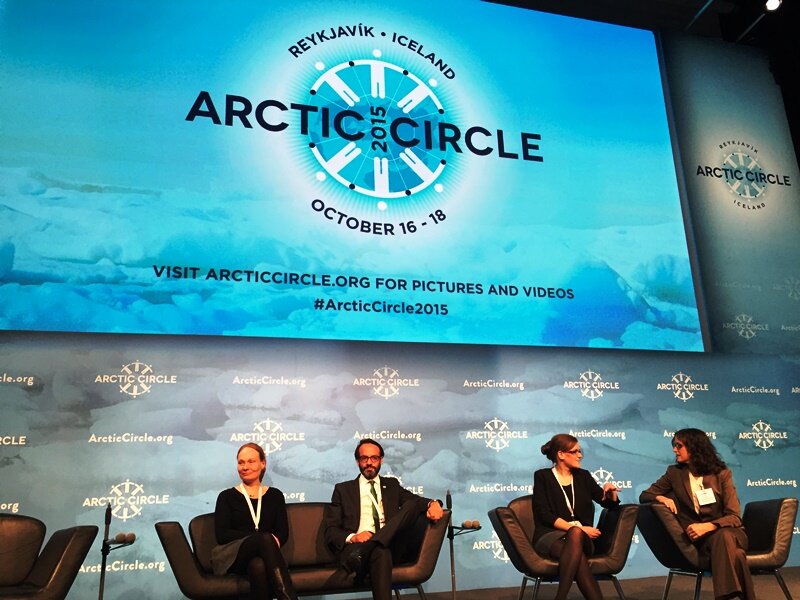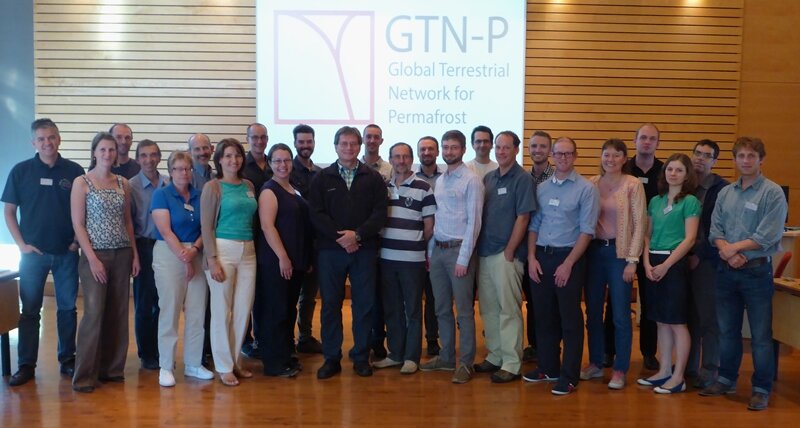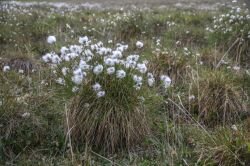Herschel Island 2014: The changing island
Herschel Island is famous for tundra covered with white cotton grass (Eriophorum vaginatum) tussock blossoms, which forms distinctive 30cm-high hummocks which are fairly difficult to walk across.
If you step on hummock, you feel as you are about to loose your balance, and sometimes you do! If you step in between the hummocks your foot can sink in to plenty of plant litter and you can also fall over!
These hummocks are believed to be created by cryoturbation or the cotton grass tussocks. The cryoturbation is the process of vertical mixing of soil layers that is caused by freezing and thawing in the active layer above the permafrost.
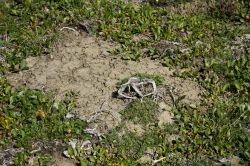 (Photo: Jaroš Obu) Frost boil exposed a willow rootThe mixing of the soil layers leads to organic material from the top layers being transported deep into the soil profile and mineral soil from below becoming exposed on the surface of the ground. For this reason, there are also patches of bare ground in many parts of Herschel Island, known as frost boils.
(Photo: Jaroš Obu) Frost boil exposed a willow rootThe mixing of the soil layers leads to organic material from the top layers being transported deep into the soil profile and mineral soil from below becoming exposed on the surface of the ground. For this reason, there are also patches of bare ground in many parts of Herschel Island, known as frost boils.
The part of our scientific work is to determine how much carbon is stored in the soils of Herschel Island. Our monitoring of watersheds (areas above point of the stream where the water drains into) includes mapping of this soil carbon.
Samuel was in charge in taking soil samples of the active layer for AWI master student Isabell Eischeid. Hugues and Jaroš helped him to dig 23 soil pits while Isla and Clara surveyed the vegetation in these same places. Later analyses will tell us how much carbon is stored in these soils and whether the amount of carbon relates to the vegetation and active layer depth.
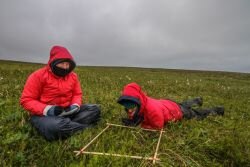 (Photo: Jaroš Obu) Isla and Clara doing the vegetation surveyThis carbon is being activated by disturbances and stream erosion and being transported from the soil throught the watershed. We are measuring the stream discharge from the Ice Creek watershed with a flume channel station and sampling water to see how much carbon is being released.
(Photo: Jaroš Obu) Isla and Clara doing the vegetation surveyThis carbon is being activated by disturbances and stream erosion and being transported from the soil throught the watershed. We are measuring the stream discharge from the Ice Creek watershed with a flume channel station and sampling water to see how much carbon is being released.
The lengthening growing season on Herschel Island and slightly warmer winter temperatures in some years has led to an increase in the active layer depth over the last three decades.
One of the questions our research team (in particular Isla and Clara from team shrub) is investigating is whether these changes have been leading to an increase in the vegetation on the island. We have observed more shrub cover in repeat photographs of the ice creek catchment and on the flood plain near the Pauline Cove settlement.
And, we have found an increase in shrub and grass vegetation in the long-term plots that have been monitored since 1999.
Satellite imagery shows a strong greening of the island, which could be related to the increases in the vegetation.
The only areas where vegetation cover is disappearing are cliffs and slumps. This is because the vegetation cover is completely removed by the remarkable disturbances occurring there. Isla, Jaroš and the team are collaborating with Robert Fraser from the Canadian Centre for Earth Observation and Mapping to explore how the tundra greening might relate to vegetation change on the island.
After three weeks of stormy and cloudy weather, in the last week of our expedition, we were finally woken up in the morning by rays of sun. This means that the helicopter finally arrived and we are looking forward to our surveys of the remote places of Herschel Island and the Yukon Coast.
Written by Jaroš and Isla


